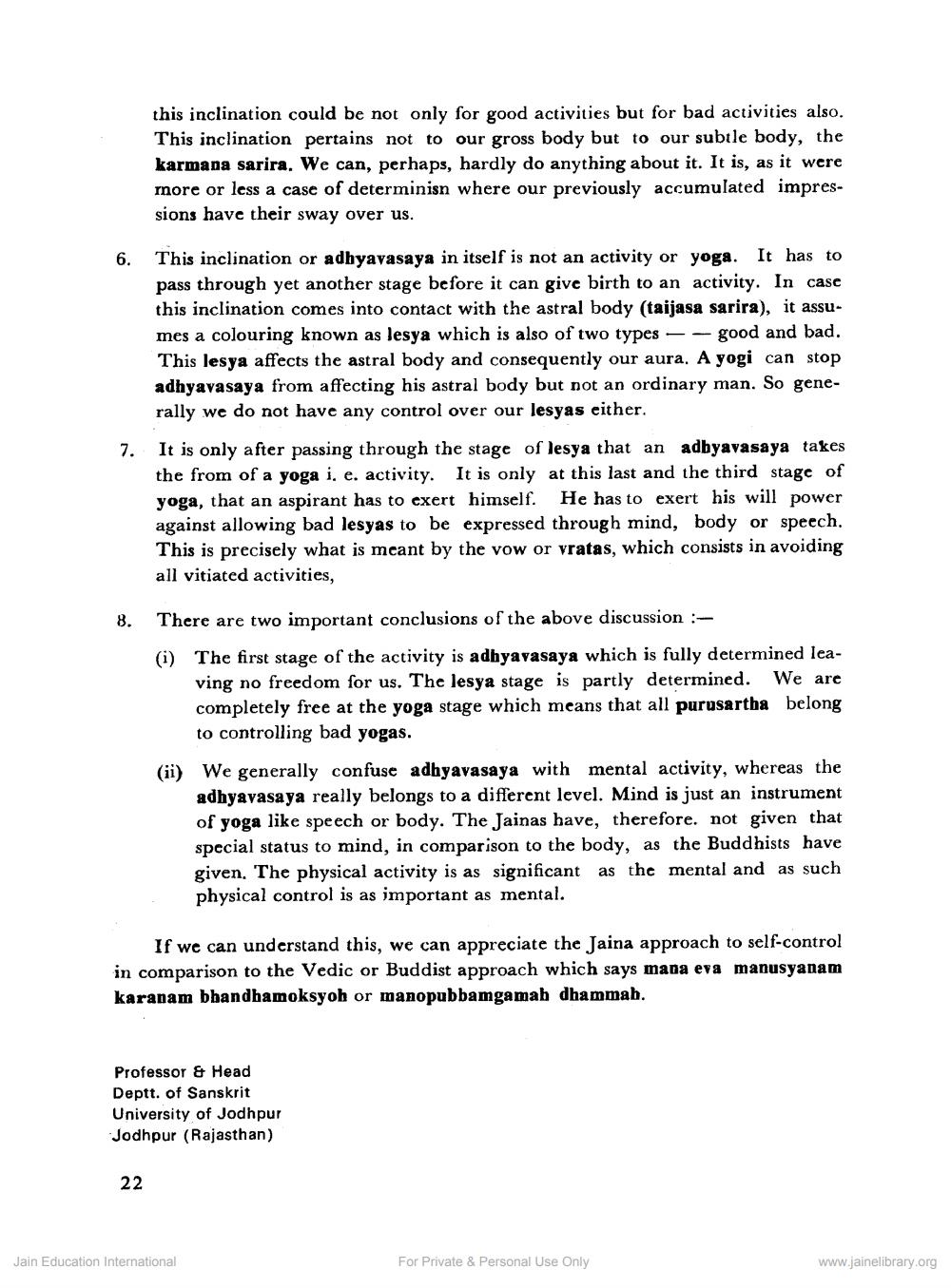________________
this inclination could be not only for good activities but for bad activities also. This inclination pertains not to our gross body but to our subtle body, the karmana sarira. We can, perhaps, hardly do anything about it. It is, as it were more or less a case of determinisn where our previously accumulated impressions have their sway over us.
6.
This inclination or adhyavasaya in itself is not an activity or yoga. It has to pass through yet another stage before it can give birth to an activity. In case this inclination comes into contact with the astral body (taijasa sarira), it assumes a colouring known as Jesya which is also of two types -- good and bad. This lesya affects the astral body and consequently our aura. A yogi can stop adhyavasaya from affecting his astral body but not an ordinary man. So generally we do not have any control over our lesyas either.
It is only after passing through the stage of lesya that an adbyavasaya takes the from of a yoga i. e. activity. It is only at this last and the third stage of yoga, that an aspirant has to exert himself. He has to exert his will power against allowing bad lesyas to be expressed through mind, body or speech. This is precisely what is meant by the vow or vratas, which consists in avoiding all vitiated activities,
7.
8.
There are two important conclusions of the above discussion :(i) The first stage of the activity is adhyavasaya which is fully determined lea
ving no freedom for us. The lesya stage is partly determined. We are completely free at the yoga stage which means that all purusartha belong
to controlling bad yogas. (ii) We generally confuse adhyavasaya with mental activity, whereas the
adhyavasaya really belongs to a different level. Mind is just an instrument of yoga like speech or body. The Jainas have, therefore. not given that special status to mind, in comparison to the body, as the Buddhists have given. The physical activity is as significant as the mental and as such physical control is as important as mental.
If we can understand this, we can appreciate the Jaina approach to self-control in comparison to the Vedic or Buddist approach which says mana eva manusyanam karanam bhandhamoksyoh or manopubbamgamah dhammah.
Professor & Head Deptt. of Sanskrit University of Jodhpur Jodhpur (Rajasthan)
22
Jain Education International
For Private & Personal Use Only
www.jainelibrary.org




